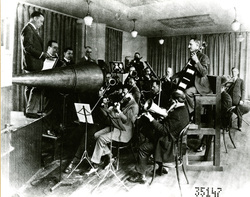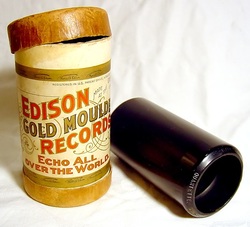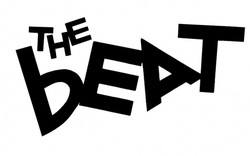Player Piano
A player piano (also known as pianola or autopiano) is a self-playing piano, containing a pneumatic or electro-mechanical mechanism that operates the piano action via pre-programmed music perforated paper, or in rare instances, metallic rolls. The rise of the player piano grew with the rise of the mass-produced piano for the home in the late 19th and early 20th century.
Gramophone Records
One of the first ways to record sound; these were manufactured in Ontario and
Quebec. A 10" disc, thick as a plate, held one song. Vinyl LP and 45RPM records
The LP (Long Play), or 33⅓rpm microgroove vinyl record, is a format for phonograph (gramophone) records, an analogue sound
storage medium. Introduced by Columbia Records in 1948, it was soon adopted as a new standard by the entire record industry. Apart from relatively minor refinements and the important later addition of stereophonic sound capability, it has remained the standard format for vinyl "albums". |
Acoustic horn/cylinder
A horn is a tapered sound guide designed to provide an acoustic impedance match between a sound source and free air. This has the effect of maximizing the efficiency with which sound waves from the particular source are transferred to the air. Conversely, a horn can be used at the receiving end to optimize the transfer of sound from the air to a receiver.
Wax Cylinder
Phonograph cylinders were the earliest commercial medium for recording and reproducing sound. Commonly known simply as "records" in their era of greatest popularity (c. 1888–1915), these cylinder shaped objects had an audio recording engraved on the outside surface which could be reproduced when
the cylinder was played on a mechanical phonograph. The competing disc-shaped gramophone record system triumphed in the market place to become the dominant commercial audio medium in the 1910s, and commercial mass production of phonograph cylinders ended in 1929. Beat
The basic rhythmic unit in a piece of music - usually grouped in twos, threes, or
fours |

